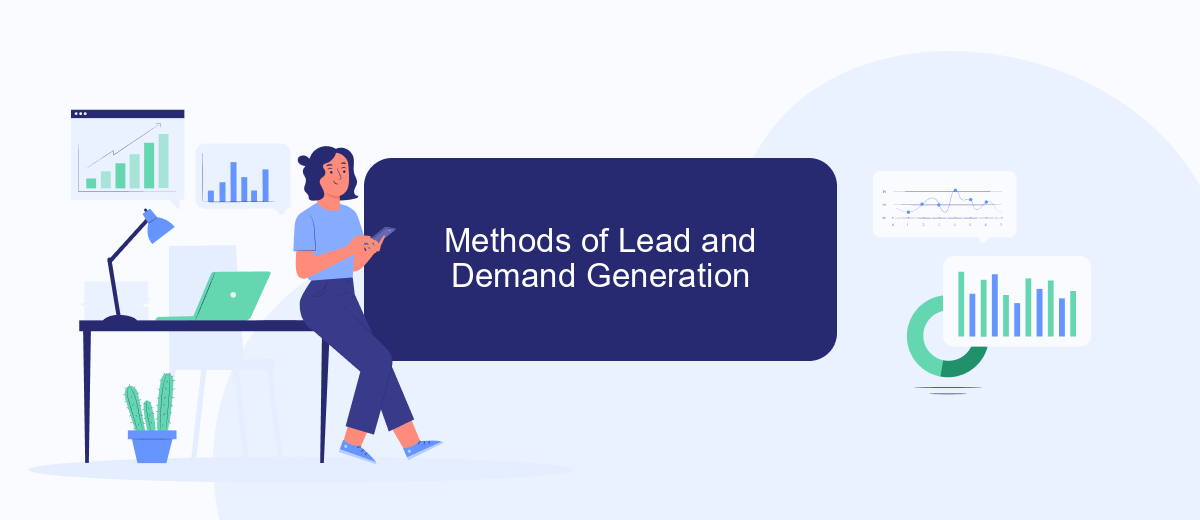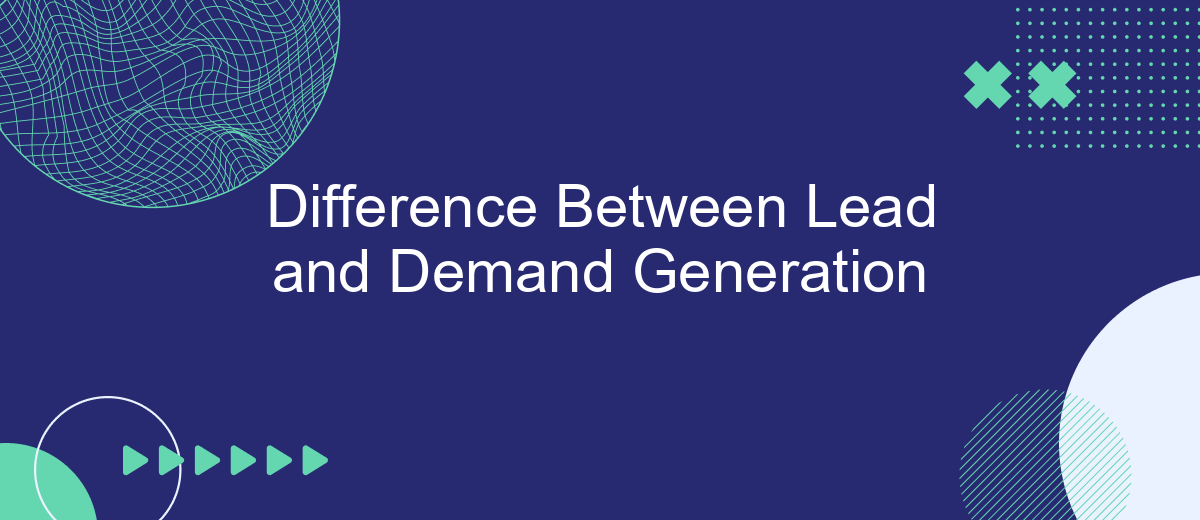Understanding the distinction between lead generation and demand generation is crucial for any business aiming to optimize its marketing strategy. While both concepts aim to attract potential customers, they employ different approaches and serve unique purposes. This article delves into the core differences between lead generation and demand generation, helping you to effectively leverage each for maximum impact.
Differences in Target Audience
Lead generation and demand generation target different segments of the market, each with unique characteristics and needs. Understanding these differences is crucial for developing effective marketing strategies.
- Lead Generation: Focuses on individuals or businesses that have shown interest in a product or service. This audience is typically more qualified and closer to making a purchase decision.
- Demand Generation: Aims to create awareness and interest in a product or service among a broader audience. This group may not yet be aware of their need for the product and requires more nurturing.
By tailoring your approach to the specific needs of each audience, you can optimize your marketing efforts. For instance, integrating tools like SaveMyLeads can streamline the process of capturing and managing leads, ensuring that your lead generation campaigns are more effective. Meanwhile, demand generation efforts might focus on broader content marketing and educational campaigns to build interest and awareness.
Lead Generation Goals vs. Demand Generation Goals

Lead generation goals focus on identifying and capturing potential customers' contact information to nurture them into becoming paying clients. This process typically involves creating targeted content and offers, such as eBooks, webinars, and free trials, that entice prospects to share their details. The primary objective is to build a robust database of leads that can be engaged through various marketing and sales efforts. Tools like SaveMyLeads can be instrumental in automating the integration of lead data from multiple sources, ensuring a seamless flow of information into your CRM system.
On the other hand, demand generation goals aim to create awareness and interest in a company's products or services. This involves a broader strategy that encompasses brand building, content marketing, and thought leadership to drive long-term engagement. The goal is to educate the market, establish trust, and position the brand as a leader in its industry. While lead generation focuses on immediate conversions, demand generation is about cultivating a pipeline of potential customers who are primed to convert in the future.
Methods of Lead and Demand Generation

To effectively generate leads and create demand, businesses utilize a variety of methods tailored to their specific goals and target audiences. Understanding the distinction between these strategies is crucial for optimizing marketing efforts.
- Content Marketing: Creating valuable, informative content to attract and engage potential customers.
- Email Campaigns: Sending targeted emails to nurture leads and maintain customer relationships.
- Social Media Marketing: Leveraging social platforms to build brand awareness and drive traffic.
- SEO and SEM: Optimizing web content for search engines and using paid ads to increase visibility.
- Webinars and Events: Hosting online or in-person events to educate and engage prospects.
- SaveMyLeads Integration: Automating lead generation processes by connecting various marketing tools and platforms.
Each method serves a unique purpose in the marketing funnel, from attracting new prospects to converting them into loyal customers. By combining these strategies and utilizing tools like SaveMyLeads for seamless integration, businesses can streamline their efforts and achieve better results in both lead and demand generation.
Measuring the Success of Lead vs. Demand Generation

Measuring the success of lead generation and demand generation requires different metrics and approaches. Lead generation focuses on capturing potential customer information, so key performance indicators (KPIs) often include the number of leads generated, conversion rates, and cost per lead. Demand generation, on the other hand, aims to create awareness and interest in your products or services, making metrics like website traffic, social media engagement, and brand awareness more relevant.
To effectively measure these efforts, businesses should use a combination of quantitative and qualitative data. This includes tracking specific actions taken by potential customers and analyzing their behavior over time. Tools like Google Analytics, CRM systems, and marketing automation platforms can provide valuable insights into both lead and demand generation campaigns.
- Number of leads generated
- Conversion rates
- Cost per lead
- Website traffic
- Social media engagement
- Brand awareness
Additionally, integrating services like SaveMyLeads can streamline the process of capturing and managing leads, ensuring that all data is accurately collected and easily accessible for analysis. By leveraging these tools and metrics, businesses can gain a comprehensive understanding of their marketing effectiveness and make informed decisions to optimize their strategies.
Integration with SaveMyLeads
Integrating your lead and demand generation efforts with SaveMyLeads can significantly streamline your marketing processes. SaveMyLeads is a powerful tool that allows you to automate the transfer of leads from various platforms directly into your CRM or email marketing system. This ensures that no potential customer is lost, and your sales team can follow up promptly and efficiently. By connecting your lead generation sources with SaveMyLeads, you can automate routine tasks and focus on more strategic activities, ultimately improving your conversion rates and ROI.
SaveMyLeads supports a wide range of integrations with popular platforms such as Facebook Lead Ads, Google Lead Form Ads, and more. It simplifies the process of capturing leads and ensures that all relevant information is accurately transferred without manual intervention. This seamless integration not only saves time but also minimizes errors, ensuring that your data is always up-to-date. Whether you are running a small business or managing a large enterprise, SaveMyLeads offers a scalable solution that adapts to your specific needs, helping you optimize your lead and demand generation strategies effectively.
FAQ
What is the main difference between lead generation and demand generation?
Which strategy should a business prioritize first, lead generation or demand generation?
How do lead generation and demand generation work together?
What metrics are used to measure the success of demand generation?
Can automation tools help in both lead and demand generation?
If you use Facebook Lead Ads, then you should know what it means to regularly download CSV files and transfer data to various support services. How many times a day do you check for new leads in your ad account? How often do you transfer data to a CRM system, task manager, email service or Google Sheets? Try using the SaveMyLeads online connector. This is a no-code tool with which anyone can set up integrations for Facebook. Spend just a few minutes and you will receive real-time notifications in the messenger about new leads. Another 5-10 minutes of work in SML, and the data from the FB advertising account will be automatically transferred to the CRM system or Email service. The SaveMyLeads system will do the routine work for you, and you will surely like it.
